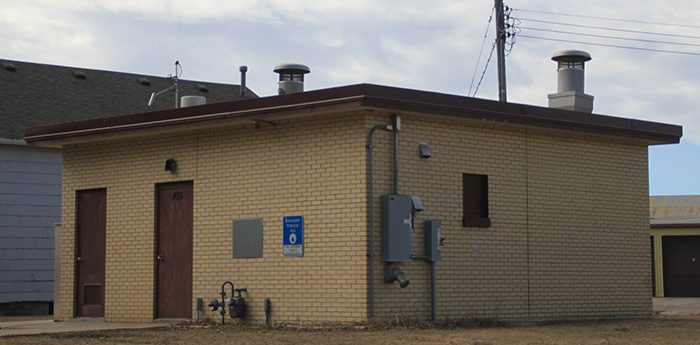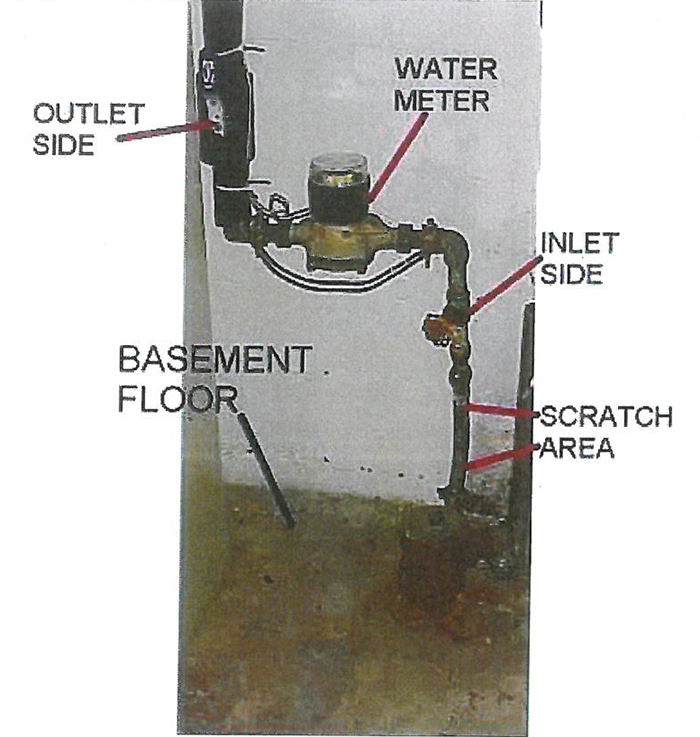Great lead pipe search begins in Minnesota
News | Published on February 27, 2024 at 4:11pm GMT+0000 | Author: Tucker Henderson
0Cities begin state mandate inventory

By Tucker Henderson
Reporter
A recent change to the Environmental Protection Agency’s (EPA) Lead and Copper Rule Revisions (LCRR) means virtually every city in the United States is completing a water service line inventory to seek out remaining lead and galvanized pipes.

In small towns like New York Mills and Deer Creek, the amount of work set out by this mandate can be quite the handful, especially on top of maintaining their regular duties. The initial reports came in 2022, but it wasn’t until 2023 that the Minnesota Department of Health started the wheels for public works directors across the state.
“In July of 2023 the Department of Health had a grant out that we could apply for as public water systems to hopefully help offset some of the costs that we incur and then potentially hire a contractor, which would be our city engineer,” said Kyle Mattson, NY Mills Public Works Director. “We did find out that we had gotten that grant last month. Apex Engineering had reached out to me and it was just some informal emails back and forth with me asking for their assistance. That’s kind of where we’re at right now.”
The original deadline to complete the work was October 16, but the deadline has been pushed forward two times already and is now set for July 16. That gives water systems less than five months to complete this inventory with a required volume of 100 percent of service lines.
“We have been going out and getting some of these inventories done ourselves,” said Mattson. “It’s kind of painstaking, the fact that we have over 500 water service lines in town and basically three people out in the field trying to gather the information. What I’ve been having them do, when they go to a house, they carry the information along, if there’s any questions, walk through the residents or homeowners, then they’ll go in and take pictures of the waterline coming into the house or business and any house piping.”
While the water system continues past the city limits in some cases, Mattson said that there are only a handful of service connections outside of NY Mills and that most of them are newer service lines and likely won’t be a problem in the inventory as they were not a part of the original distribution.
“What we’re looking for is to categorize what every service is, whether it’s plastic, galvanized, lead, or copper. Basically, what this information is going to do for us is identify these locations that potentially have a lead service line, or a galvanized or other. Galvanized is considered a line that needs to be replaced along with a lead line if we do find it,” he said.
Mattson reported that so far, no lead lines have been found within the system, but several galvanized lines have been located. These galvanized required replacements (GRR) will need to be replaced in the future according to the results of the nationwide inventory and the EPA’s final ruling on the matter.
“I had reached out to Minnesota Rural Water, which we’re a member of, and asked them what we need to do right now about anything we run across like that,” said Mattson. “They said that it’s part of the inventory, once all the information is compiled and submitted to the State, then the State will hopefully have some money available to assist the homeowner replacing the line.
“One really good thing that we’ve done in the past, when we’ve replaced water and sewer mains, we’ve put all brand new service lines up to the point of connection, which is on the property line,” he continued. “We’ve written what we’ve ran brand new and what we’ve connected to. So that’s going to help out a lot with our inventory as well to speed that process up. We still want to get in and photograph, make sure, verify everything is good on the utility side, plus take a look at customer-side piping too.”
Mattson said that the inventory won’t change anything for property owners immediately, but that service lines will need to satisfy the minimum requirements of the LCRR lead service line inventory, which means that all lead and galvanized service lines will ultimately need to be replaced in the future.
“There’s going to be some homes, abandoned buildings, that we won’t be able to get in, so we’re just going to consider those unknowns,” said Mattson. “It sounds like there should be another round of grant funding through the State or EPA to assist us with figuring those ones out, whether it be hiring an excavator to come and do a dig down to the service lines because we can’t enter the building, so there’s going to be some money available for that as well.”
Though the City of NY Mills was awarded the grant monies they applied for, that doesn’t mean that Apex Engineering can start assisting right away, as the State has yet to execute the contracts. In the meantime, the Public Works crew will continue to do individual field visits to each property they can. Property owners are asked for their assistance in self-reporting pictures of their service line including the first valve prior to the meter.
Those who aren’t able to do so, or would rather trust the expertise of the public works crew, can expect a visit from them in the coming months. Submissions can be emailed to nymwaterdept@gmail.com or texted to (218) 325-0077. Mattson asks that those who self-report use lots of light to locate the pipe, and include the floor or foundation where the service line makes its entry from the ground, along with the piping on the outlet side of the meter.
Make sure to uncover the service line from any paint or corrosion prior to taking pictures and if the service line is gray or dark gray, test it with a magnet. If the magnet sticks, show that in the picture. A scrape test is also helpful to test whether a service line is malleable lead which is easy to scrape and a groove of shiny lead will appear.
When submitting information and pictures, make sure to include a physical address of where the information is provided. Mattson is available at (218) 385-2213 for any questions about the inventory.
“We’re just continuing, whenever we can, to send people out to knock on doors, talk to homeowners, photograph the meters, we’re trying to get as many knocked out as we can,” said Mattson. “It’s a lot of work. It’s very time consuming. Hopefully we can get assistance from the homeowners that we can’t catch.”
Deer Creek
In Deer Creek, the process has just begun. Dan Kovar, Water/Sewer Operator, said that they are currently in the process of reviewing the information that they have already, including the ages of many buildings in town.
“We can kind of go by age on some of the houses and eliminate the issue by when they were built,” said Kovar. “Then the rest, we’re going to have to do notifications to the homeowners and in-house inspections.”
With a smaller customer base than NY Mills’ water system, Deer Creek did not feel the need to apply for grant funding right away to complete the inventory. They will complete the inventory and review their findings before applying for any grants.
“The city didn’t feel they needed the money to do the inventory, they will just seek help if they need to do replacement of any services,” said Kovar. “Then we’re going to apply after that.”
As the only public works employee, Kovar will be working hard to complete the inventory in the coming months. He said that he is happy to answer questions and try to further inform the public on the process. Kovar can be reached by phone at (218) 639-7681 or by email at citydc.util@gmail.com
“If they have questions, they can definitely give me a call,” said Kovar. “They can definitely give me a call and I can help them through the process of checking and answering questions.”

